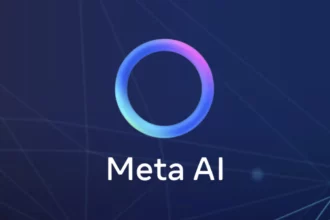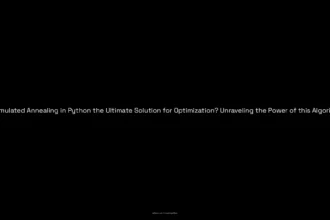Are you ready to power up your knowledge on Transformer Training? Whether you’re a tech enthusiast or a curious learner, this blog post will unveil the secrets behind these fascinating machines. From understanding the inner workings of Transformers to exploring the challenges they face, we’ll dive deep into the world of Transformer Training. So, buckle up and get ready for an electrifying journey that will leave you buzzing with excitement!
Table of Contents
ToggleUnderstanding Transformer Training
In the labyrinth of deep learning, the transformer model emerges as a veritable titan, its prowess shaping the frontiers of Natural Language Processing (NLP) and Computer Vision (CV). These models, with their unique architecture, have not just entered the fray; they have altered the very nature of the battlefield. So, what is the crucible that tempers these models, and how do they emerge, battle-ready? Let’s embark on this journey of discovery.
At the core of the transformer’s might is the self-attention mechanism, a nimble sorcerer that weaves contextual threads throughout the input data tapestry. Unlike their predecessors, transformers aren’t constrained by sequential data processing shackles. Instead, they perceive the entire input in a single glance, grasping context and relevance with an uncanny precision.
Let’s concretize these concepts with a simple illustration. Picture a transformer as a diligent scholar, sifting through historical archives. While traditional models might read through documents line by line, the transformer can instantly connect a footnote on one page with a critical event listed pages away, constructing a holistic understanding in a fraction of the time. This remarkable ability stems from the model’s design, which eschews the rigidity of sequential processing for the fluidity of parallel computation.
Training transformers, however, is not without its challenges. As their layers deepen and their breadth expands to capture more intricate patterns, the computational toll mounts. For the uninitiated, consider the attention layer as the beating heart of the transformer, responsible for the intricate dance of weighted interactions between tokens. Yet, this heart’s beat grows more demanding with each increase in sequence length—a veritable doubling of the sequence length can lead to a quadrupling of computational burden.
Beneath the surface, transformers train by leveraging an attention mechanism that simultaneously processes all tokens, calculating “soft” weights that map out the intricate web of relationships between them. This parallel processing is akin to a grand orchestra, where every instrument is tuned in real-time to create a harmonious symphony of data understanding.
Despite these challenges, the transformer model stands tall, its innovation in the realm of machine learning undisputed. The Vision Transformer (ViT), for instance, has turned the tables on the state-of-the-art convolutional networks, delivering stellar performances across multiple benchmarks with a leaner appetite for computational resources.
| Aspect | Details |
|---|---|
| Model Type | Deep learning model specializing in NLP and CV tasks. |
| Mechanism | Utilizes self-attention to process sequential input data. |
| Input Processing | Processes the entire input data at once for context and relevance. |
| Efficiency | Computationally efficient and scalable, especially in NLP. |
| Training Complexity | Training difficulty increases with deeper networks and longer sequences. |
As we continue to unfurl the scrolls of knowledge, the next sections will further illuminate the inner workings of transformers, their typologies, and the secret to their remarkable efficacy. Stay tuned as we dissect their architecture and unveil the nuances of their training regimens.
How Transformers Work: The Attention Mechanism
Imagine stepping into an ancient library, where every book whispers its most pivotal secrets to you all at once. This is the magic woven by the attention mechanism at the core of transformer models. It’s a powerful conjurer that enables the model to process a multitude of tokens — the smallest units of data, like words in a sentence — simultaneously, rather than sequentially. This parallel processing is akin to a masterful scholar who can absorb and synthesize information from multiple sources in an instant.
The attention mechanism intricately calculates “soft” weights, which are essentially the numerical importance assigned to each token. These weights determine how much focus a particular token should receive when predicting another. For example, in the sentence “The cat sat on the mat,” the attention mechanism might assign a higher weight to “cat” when the word “sat” is being processed, indicating a strong relationship between the two words. This happens in successive layers, each building a more nuanced understanding of context and relevance.
What sets the attention mechanism apart is its ability to be computed for all tokens in parallel, rather than one after the other. This is not just a small step but a giant leap in improving training speed and efficiency. It’s like having a team of scholars, each dedicated to understanding one aspect of a complex topic, and then combining their insights instantly. This is a stark contrast to older sequential models that had to read each token one by one, making the process painstakingly slow.
In the realm of deep learning, such mechanisms are pivotal. They act as a dynamic spotlight, illuminating the path to significant input elements, much like how a detective’s focused beam might highlight clues otherwise lost in shadow. This not only enhances the model’s prediction accuracy but also its computational efficiency. By prioritizing and emphasizing relevant information, attention mechanisms ensure that transformer models don’t waste resources on less significant data.
There are different flavors of attention mechanisms, each with its own unique approach to processing information. The Global (Soft) Attention model, for instance, is like having an unfaltering gaze that considers every part of the input data, leading to a fully differentiable mechanism. On the other hand, Local (Hard) Attention is more akin to a sniper’s scope, zeroing in on a subset of the input data as determined by a learned alignment model. This diversity in attention types allows different transformer models to excel in various tasks, from language translation to image recognition.
As we delve deeper into the intricacies of transformer training, we will uncover how these attention mechanisms, with their parallel processing prowess, are not just theoretical marvels but practical tools that reshape how machines learn from data. Their capability to sift through and prioritize information quickly is a testament to the transformative power of modern artificial intelligence.
The Challenges of Transformer Training
Embarking on the journey of training transformers is akin to setting sail on a vast digital ocean, where the computational waves can be both exhilarating and overwhelming. These sophisticated models, hailed for their ability to parse and interpret complex data patterns, are not without their trials and tribulations—particularly when it comes to handling the lengthy sequences of data that are often integral to understanding human language and behavior.
The attention layer, the lynchpin of the transformer’s innovative structure, is a double-edged sword. On the one hand, it is the source of the model’s remarkable ability to weigh the significance of different pieces of information. On the other hand, it serves as the primary bottleneck in both compute and memory resources. Consider the sequence length as the distance to be traveled: just as doubling the miles on a voyage would require more provisions and time, similarly, doubling the sequence length in a transformer model would quadruple the runtime and memory requirements—a formidable challenge in the realm of machine learning.
Picture this: each word or token in a sentence is like a traveler with a suitcase full of context and meaning. As the sequence gets longer, the number of suitcases increases exponentially, and the attention mechanism must meticulously unpack each one to understand the contents in relation to all the others. This process, while necessary for the model to generate nuanced and accurate predictions, becomes a Herculean task that demands significant computational power and time.
Therefore, the quest to train these models efficiently is not for the faint-hearted. It requires a balanced cocktail of technical expertise, patience, and robust hardware. The longer the data sequences, the more complex the interplay of tokens, and consequently, the greater the computational demands. This reality paints a picture of a resource-intensive endeavor, where only the most dedicated and well-equipped will navigate successfully.
Yet, it is this very challenge that propels the field forward, inspiring innovations in model architecture, training methods, and hardware capabilities. The attention mechanism’s capacity to parallel process tokens is a beacon of efficiency in an otherwise resource-hungry process, promising a horizon where transformers can be trained more swiftly and effectively.
Thus, as we delve deeper into the intricate world of transformers, we must brace ourselves for the computational storms ahead, armed with the knowledge that these challenges are but stepping stones to more advanced and capable AI systems. With each hurdle crossed, we edge closer to realizing the full potential of transformer models, which hold the key to unlocking new realms of machine intelligence.
As we prepare to explore the intricacies of pretraining and fine-tuning transformers in the sections that follow, it is essential to acknowledge that these stages are critical in transforming a raw model into an astute artificial intellect. While the path to mastery may be fraught with challenges, it is the steadfast pursuit of innovation and efficiency that will continue to drive the evolution of these transformative machine learning models.
Pretraining and Fine-Tuning Transformers
In the realm of artificial intelligence, the journey of a transformer model from inception to mastery is a tale of two pivotal phases: pretraining and fine-tuning. Picture pretraining as the broad and intensive education of a young prodigy, absorbing the vast complexities of language. This foundational stage harnesses a large corpus of data, akin to numerous tomes of knowledge, to instill an understanding of linguistic structures and the subtle nuances of context.
During this phase, the transformer model embarks on a computational odyssey that may span several weeks. Like a diligent scholar, it learns to discern the intricate patterns of syntax and semantics from a deluge of sentences, a process that is both time-consuming and resource-intensive. Yet, this laborious endeavor is essential, for it equips the model with the robust versatility required to grapple with a myriad of linguistic challenges.
Upon completing its pretraining, the model enters the stage of fine-tuning. Here, the training is honed and tailored to specialize in specific tasks. Whether it is the delicate art of sentiment analysis, the precision of named entity recognition, or any other specialized task, fine-tuning sharpens the model’s skills, refining its abilities to a razor’s edge. This stage is much like an artist refining their brush strokes or a musician perfecting their scales—the model is sculpted into an expert tool, adept at its designated function.
Throughout both stages, transformers are a testament to the power of machine learning, showcasing an impressive ability to adapt and excel. They are not just learning algorithms; they are evolving entities that grow in understanding and capability, mirroring the intellectual development of a human being. As such, they represent a pinnacle of current AI research, a beacon that guides us further into the future of machine intelligence.
Why Transformers Work Well
In the electrifying realm of artificial intelligence, transformers stand out as the dynamos of machine learning. They shine brightly for their capacity to adeptly handle parallel processing, which is akin to a maestro conducting an orchestra of operations with precision and harmony. Unlike traditional models that painstakingly process data in a linear sequence, transformers break away from the chains of sequential dependency. This strategic design choice is a game-changer, allowing transformers to perform multiple sequences in tandem.
Imagine a room full of diligent scribes, each transcribing different stories simultaneously. This is how transformers operate on hardware, capitalizing on the strength of modern multi-core processors. This parallelism is not only a testament to their efficiency but also a reflection of the complex nature of language they are designed to understand. Sentences are not just strings of words but tapestries woven with intricate patterns of meaning and context. By analyzing these patterns collectively, transformers can glean insights at a remarkable pace, propelling them to the forefront of natural language processing (NLP).
Such efficiency is particularly advantageous when dealing with the vast seas of data required for pretraining. It enables the model to swiftly navigate through the nuances of human language, learning to predict, translate, and generate text with astonishing acuity. This parallel processing prowess translates into tangible benefits for applications ranging from chatbots to literary analysis, making transformers not only a technological marvel but also a cornerstone of progress in the AI landscape.
Four Classes of Transformers
The versatility of transformers extends beyond the digital world and into the physical realm of electrical engineering. Here, the term transformer refers to the devices that form the backbone of our electrical grids. Just as their AI counterparts learn and adapt, electrical transformers efficiently transfer and manipulate energy to keep our world powered and connected.
- Power Transformers – These are the titans of electricity, bridging the gap between generation and distribution. They are the silent sentinels that ensure the safe and efficient transfer of power from plants to the spiderweb of primary circuits crisscrossing cities and countryside.
- Generator Step-Up Transformers (GSUs) – As their name suggests, GSUs are the boosters that elevate the voltage output from power generators. This step-up process is critical for transmitting electricity over long distances, minimizing losses, and maintaining the integrity of our electrical infrastructure.
- Autotransformers – Although not explicitly mentioned earlier, these are the transformers that can variably adjust voltage levels within the same winding. Their adaptability makes them useful in applications that require a range of voltage levels without the need for separate coils.
- Auxiliary Transformers – These unsung heroes work behind the scenes in power stations and industrial settings, providing power for auxiliary equipment that supports the main operations. They are vital for the smooth functioning of systems that keep the lights on in our homes and machines running in factories.
From powering our conversations to lighting our cities, transformers in both AI and electrical engineering demonstrate a blend of strength, adaptability, and efficiency. As we continue to explore this dual use of the term, it becomes clear that, whether in silicon or steel, transformers are pivotal to the advancement and sustenance of modern technology.
Working of a Basic Transformer
Imagine a maestro conducting an orchestra, each movement meticulously guiding the symphony of instruments to create a harmonious melody. Similarly, at the heart of a transformer, a magnetic core orchestrates the flow of energy, ensuring that the magnetic field elegantly dances from the primary to the secondary coil. This precision is fundamental in preventing the dissipation of precious energy. A basic transformer’s operation is a testament to the elegance of electromagnetic principles.
When alternating current flows through the primary coil, it generates a magnetic field that is channeled by the core. The secondary coil, wrapped around the same core, is thus enveloped in this magnetic field. The magnetic field, much like an invisible force, compels the electrons in the secondary coil to move. This movement is the birth of an electric current, a phenomenon known as electromotive force (EMF). This interplay of magnetic fields and electrical currents is the cornerstone of transformer functionality.
Addressing the matter of the three-wire configuration in transformers, the third wire often sparks curiosity. This wire serves as the ground connection, a silent guardian that provides safety and stability. While it may seem optional, the removal of the ground wire on the secondary side is not a decision to be taken lightly. The Occupational Safety and Health Administration (OSHA) advocates for grounding the transformer on at least one side to safeguard against potential electrical hazards.
In the grand scheme of transformer training, understanding the basic workings of these devices is akin to grasping the opening moves in a game of chess. As you delve deeper into the world of deep learning, the role of transformers, with their capacity to process tokens simultaneously and their efficiency in handling sequential data, becomes increasingly prominent. Be it in Natural Language Processing (NLP), Computer Vision (CV), or other domains requiring an intricate understanding of data sequences, the transformer model stands out as an exemplary choice.
While the intricacies of transformer technology can seem daunting at first glance, the basic principles are grounded in the fundamental laws of physics. Their undeniable prowess in both the digital and physical realms is a reflection of their well-designed structure and functionality. As we move forward, the impact of these transformers continues to grow, shaping the future of technology in profound ways.
Q: How does a transformer train?
A: Transformers train by using an attention mechanism to process all tokens simultaneously and calculate “soft” weights between them in successive layers. This allows for improved training speed as the attention mechanism can be computed for all tokens in parallel.
Q: What are the types of transformers?
A: The types of transformers include power transformers, autotransformers, generator step-up transformers, and auxiliary transformers.
Q: How does a basic transformer work?
A: The core of a transformer directs the path of the magnetic field between the primary and secondary coils to prevent wasted energy. When the magnetic field reaches the secondary coil, it forces the electrons within it to move, creating an electric current via electromotive force (EMF).
Q: Why are transformers slow to train?
A: The size of transformer models, which determines the number of parameters and layers they have, is one of the factors that affect their training speed. Larger models can capture more complex patterns and nuances, but they also take longer to train and run, and consume more resources.




